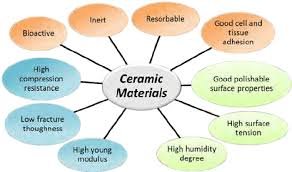
How do you ensure precision in Medical Device micro-manufacturing processes ?

Ensuring precision in medical device micro-manufacturing, which involves creating small-scale components often with micron-level tolerances, requires meticulous planning, advanced technology, and stringent quality control measures. Here’s how precision is typically achieved in these specialized manufacturing processes:
1. Advanced Manufacturing Technologies
- Micro-Machining: CNC micro-machining equipment is used for producing extremely small parts with high precision. These machines offer enhanced capabilities like higher spindle speeds and finer tooling.
- Laser Micro-Machining: Lasers provide the ability to cut, drill, and ablate materials at micron-level precision without physical contact, reducing the risk of mechanical stress or deformation.
- Photo-Lithography: Common in microelectronics but also used in microfluidic devices for medical applications, photolithography allows for highly precise patterning on substrates.
2. Specialized Tooling
- High-Precision Tools: Utilizing tools designed specifically for micro-manufacturing, which can maintain accuracy and repeatability at very small scales.
- Custom Tool Fabrication: In some cases, custom tools may be necessary to meet unique design specifications of medical micro-devices.
3. Tight Tolerance Control
- Engineering Design: Design components with tolerances that are achievable given the manufacturing processes and tool capabilities. This involves detailed analysis of material properties and manufacturing limitations.
- Process Optimization: Continuously refine and optimize manufacturing processes to improve precision and reduce variability. This often involves statistical process control and design of experiments.
4. Quality Control and Inspection
- Advanced Measurement Tools: Employ advanced metrology tools such as laser scanners, coordinate measuring machines (CMMs), and atomic force microscopes that can measure features at the micron or sub-micron level.
- Regular Calibration: Ensure that all measurement instruments and manufacturing equipment are regularly calibrated against standard references to maintain accuracy.
5. Cleanroom Manufacturing Environments
- Contamination Control: Utilize cleanroom environments for manufacturing and assembly to prevent contamination that could significantly impact the function of micro-scale devices.
- Environmental Control: Maintain strict control over environmental factors such as temperature, humidity, and vibration, which can affect manufacturing precision at micro scales.
6. Material Handling and Preparation
- Material Quality: Use high-quality materials with consistent properties to reduce variability in manufacturing processes.
- Pre-process Treatment: Include processes such as annealing or surface treatment to stabilize materials before manufacturing, enhancing their machinability and reducing defects.
7. Skilled Workforce
- Specialized Training: Ensure that personnel are highly trained in micro-manufacturing techniques and understand the complexities and challenges associated with working at such small scales.
- Continuous Education: Keep the workforce updated on the latest technologies and best practices in micro-manufacturing.
8. Process Validation
- Rigorous Testing: Implement rigorous testing protocols to validate that each batch of products meets the stringent specifications required for medical devices.
- Iterative Improvement: Use feedback from testing and real-world use to make continuous improvements to the manufacturing process.
9. Regulatory Compliance
- Documentation and Traceability: Maintain detailed records of all manufacturing processes, material batches, and inspection results to ensure traceability and compliance with regulatory standards such as those set by the FDA or ISO.
By integrating these strategies, manufacturers can achieve the high levels of precision required for medical device micro-manufacturing, ensuring that devices perform reliably and safely in clinical applications. This meticulous approach to manufacturing also supports compliance with stringent industry regulations and standards.




























